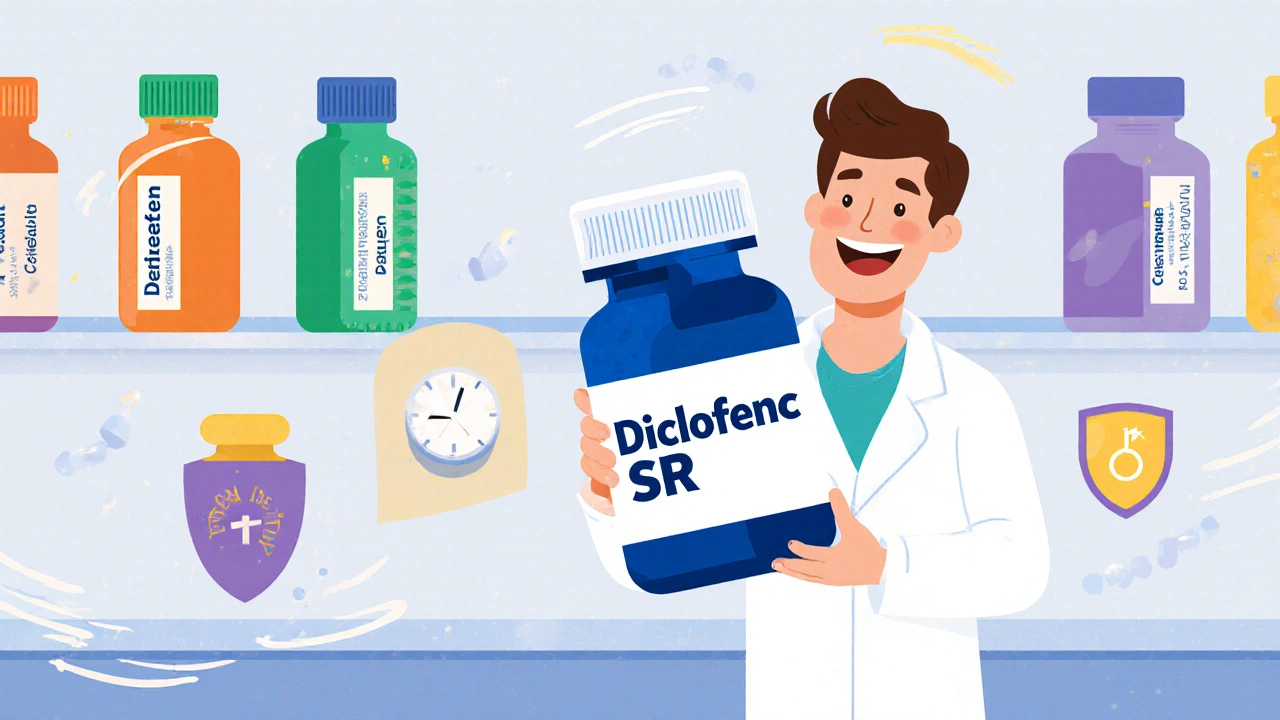Celecoxib: What You Need to Know Before You Take It
Thinking about celecoxib for arthritis, back pain, or menstrual cramps? You’re not alone – it’s one of the most prescribed NSAIDs because it targets inflammation without hurting your stomach as much as older drugs. Before you pop a pill, let’s break down how it works, when it’s useful, and what to watch out for.
How Celecoxib Works and When It’s Used
Celecoxib belongs to the COX‑2 inhibitor family. It blocks a specific enzyme (COX‑2) that makes prostaglandins, the chemicals that cause pain and swelling. Because it spares COX‑1, your stomach lining stays safer compared with non‑selective NSAIDs like ibuprofen. Doctors usually prescribe it for:
- Osteoarthritis and rheumatoid arthritis flare‑ups
- Acute musculoskeletal pain (sprains, strains)
- Ankylosing spondylitis
- Primary dysmenorrhea (painful periods)
If you have mild to moderate pain and want a drug that’s less likely to cause ulcers, celecoxib is often a good fit. However, it’s not a cure – it just eases the symptoms while you manage the underlying condition.
Safety Tips, Dosage, and Common Interactions
Typical adult dosing starts at 200 mg once daily or 100 mg twice daily, depending on the condition. Your doctor may adjust the dose up to 400 mg per day for severe arthritis. Always take the tablet with food or a full glass of water to reduce any stomach irritation.
Key safety points:
- Heart risk: Celecoxib can raise blood pressure and increase the chance of heart attacks, especially at higher doses or if you already have cardiovascular disease.
- Kidney caution: Like other NSAIDs, it may affect kidney function. Stay hydrated and have your kidney numbers checked if you’re on it long‑term.
- Allergies: If you’ve reacted to aspirin or other NSAIDs before, tell your doctor. You could develop hives, wheezing, or even anaphylaxis.
Drug interactions you’ll want to avoid:
- Blood thinners (warfarin, apixaban) – higher bleed risk.
- Other NSAIDs or steroids – double up on stomach irritation.
- Selective serotonin reuptake inhibitors (SSRIs) – also increase bleeding.
- ACE inhibitors or diuretics – may lower kidney function further.
Always share a full medication list with your prescriber, including over‑the‑counter vitamins and herbal supplements.
When it comes to price, celecoxib is available as a brand (Celebrex) and several generics. The generic version is usually cheaper and works the same. Check pharmacy discount cards or online price‑compare tools to find the best deal.
Bottom line: celecoxib can be a solid choice for inflammatory pain when you need relief without frequent stomach upset. Stick to the prescribed dose, monitor blood pressure, and stay alert for any unusual symptoms. If you notice swelling, shortness of breath, or chest pain, seek medical help right away. With the right precautions, celecoxib can keep you moving comfortably.
Diclofenac SR vs Alternatives: Which NSAID Is Right for You?
A practical comparison of Diclofenac SR with ibuprofen, naproxen, celecoxib and aspirin, covering dosing, risks, and when each NSAID is best.
Polyposis Medication Guide: Drugs That Shrink Colon Polyps
Explore how medications like aspirin, sulindac, and celecoxib are used to treat polyposis, the science behind them, and what patients should know.

